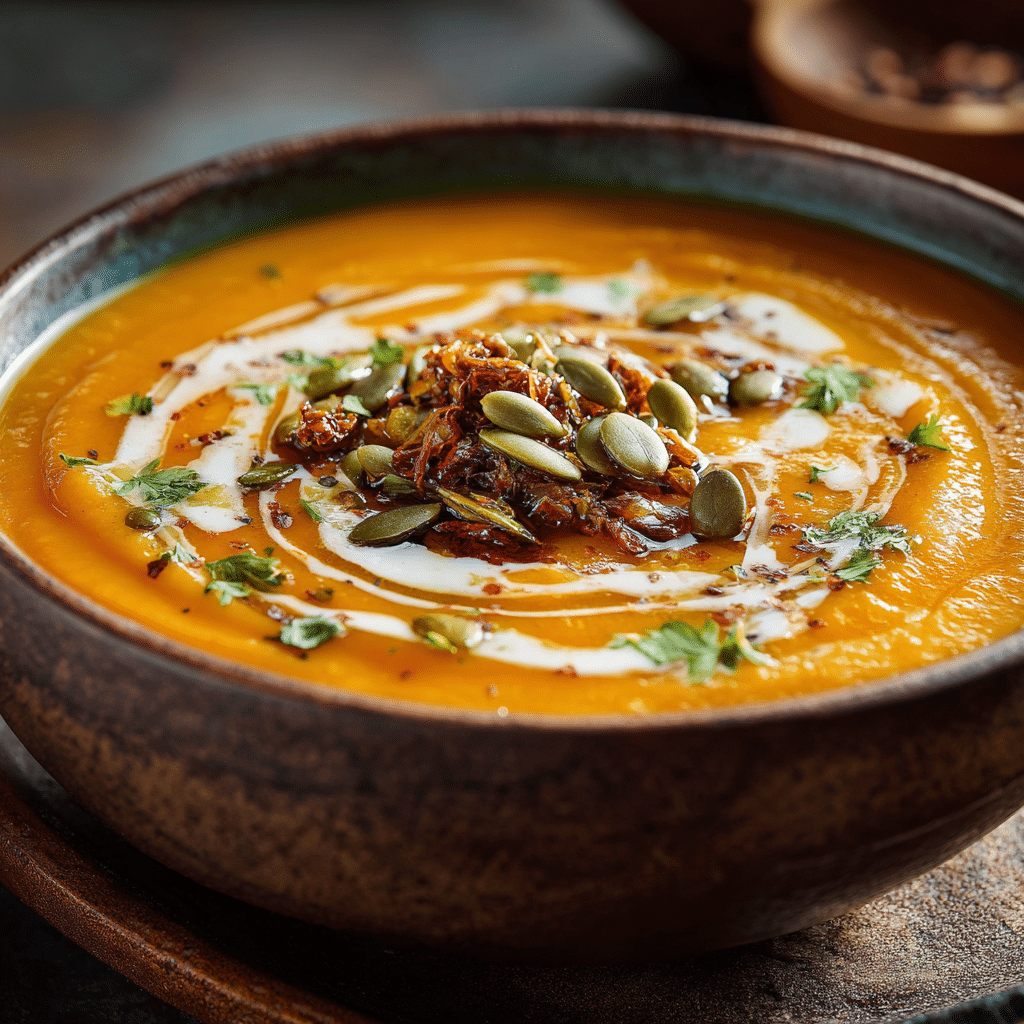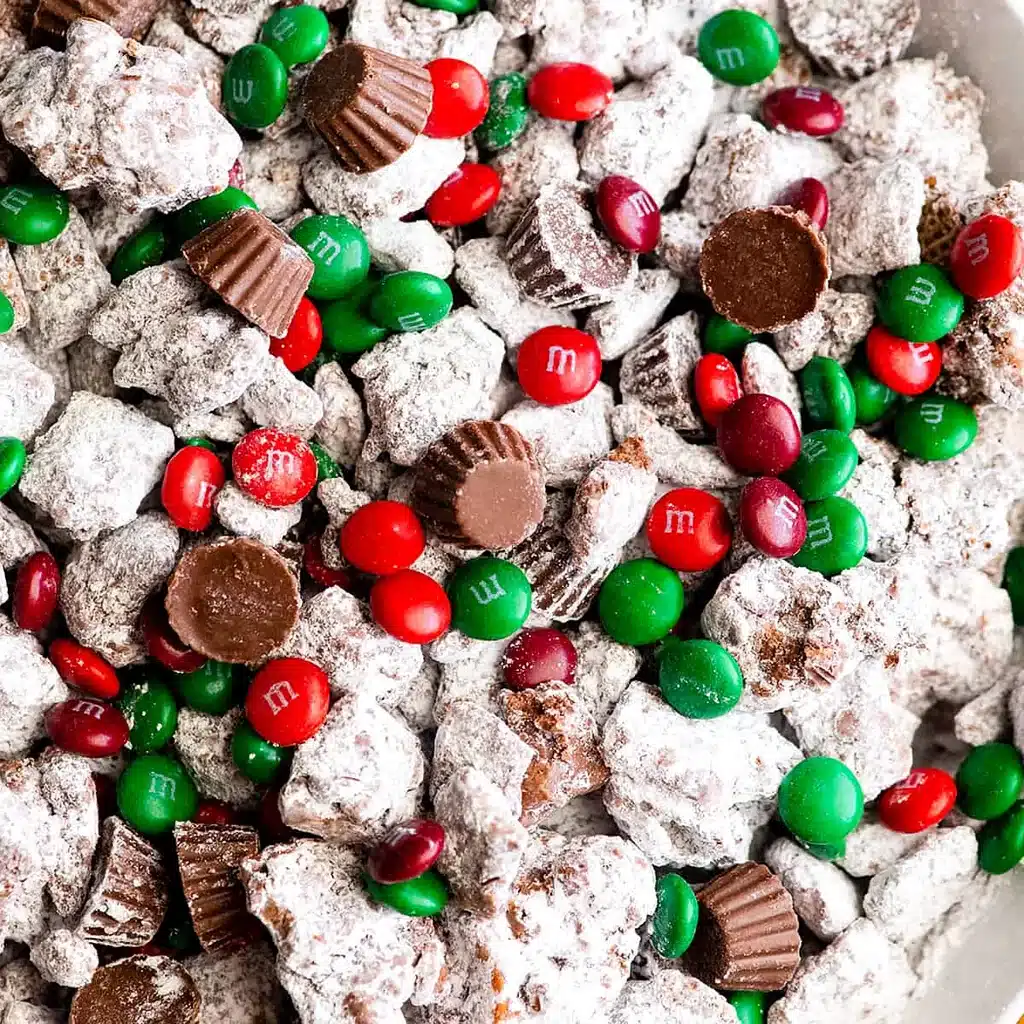Pickled cauliflower recipe lovers, you’re in for a treat. If you’ve ever opened the fridge and wished for something crunchy, tangy, and just the right amount of salty to nibble on, this jar of homemade goodness is what you need. In this article, I’ll guide you through the joy of pickling cauliflower at home—from how my grandma made it in late summer to storing it for months ahead. We’ll walk through step-by-step instructions, helpful tips, and answer the most common questions folks ask when they get into pickling.

Whether you’re prepping for a BBQ, making a grazing board, or preserving veggies before they go bad, homemade pickled cauliflower is your flavorful friend. Let’s get started with the backstory before diving into the details.
Table of Contents
The Memory Behind My Favorite Pickled Cauliflower Recipe
Growing up in Michigan, every August meant one thing in my grandma’s kitchen—pickling season. While the other kids were still chasing ice cream trucks, I was lining up jars and sneaking crunchy bites of just-blanched cauliflower. She had this massive enamel pot that always smelled of vinegar, garlic, and a hint of mustard seed. When I say this pickled cauliflower recipe brings me straight back to those childhood days, I mean it—one bite and I’m there again, barefoot on her back porch.
These jars of crunchy pickled cauliflower weren’t fancy, but boy were they flavorful. We’d pile them into cold lunches, toss them onto our Sunday roast platters, or eat them straight from the fridge. Over the years, I’ve tweaked her method just a little—less sugar, a touch more garlic—but the heart of it is still hers.
Why This Pickled Cauliflower Recipe Works So Well
This recipe nails the balance of briny and bright. It uses basic pantry ingredients—white vinegar, water, kosher salt, and your choice of spices. You can add a touch of sweetness or keep it sharp. The texture stays crisp thanks to a quick blanch before pickling, and the cauliflower soaks up the flavor in just a few days.
If you’ve never tried your hand at pickling, cauliflower is a fantastic place to begin. It holds its bite, takes on flavor fast, and looks beautiful packed into jars with some red pepper slices or a bay leaf for extra flair. We’ll go into the full recipe later, but just know this: once you make one batch, you’ll want to stock your fridge with them year-round.
Brining and Blanching Made Simple
How to Prepare Cauliflower for Pickling
When making a pickled cauliflower recipe, prepping your cauliflower is the key to great flavor and crunch. Choose a fresh head with tight florets and no dark spots. Rinse it thoroughly, then slice it into medium florets—not too small, or they’ll get too soft in the jar.
Now let’s answer a big question: does cauliflower need to be blanched before pickling? Yes, it does. Blanching the cauliflower for just two minutes in boiling water softens the bite without making it mushy. After that, plunge it into an ice bath to stop the cooking.
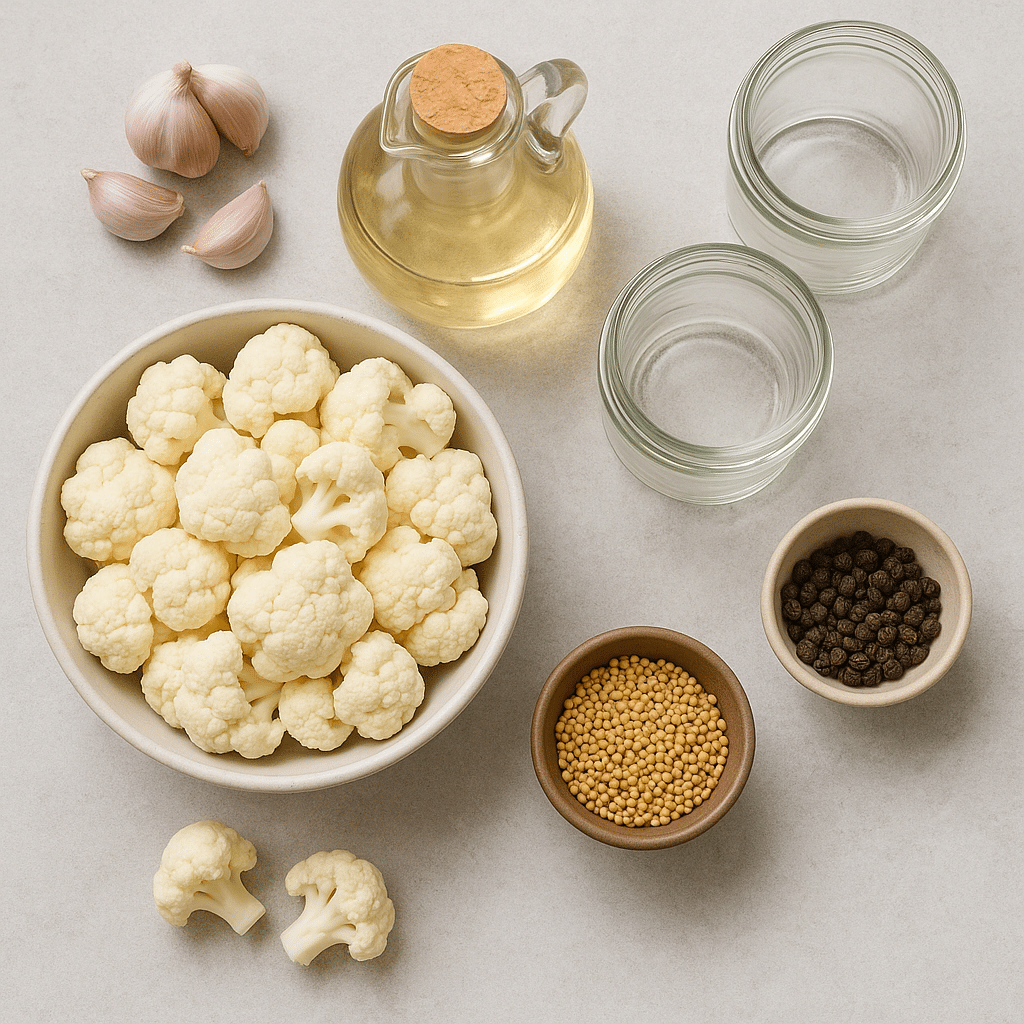
Here’s how to prep for your favorite pickled cauliflower recipe:
| Step | Details |
|---|---|
| Wash | Rinse cauliflower, remove leaves, and cut into florets |
| Blanch | Boil 2 minutes, then move immediately into ice bath |
| Dry | Let drain or pat dry before adding to jars |
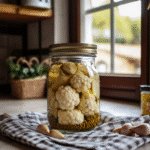
Pickled Cauliflower Recipe That’s Tangy, Crunchy, and Perfect for Snacking
- Total Time: 15 minutes
- Yield: 2 pint jars 1x
- Diet: Vegan
Description
This easy pickled cauliflower recipe is tangy, crunchy, and packed with flavor. Made with simple pantry ingredients and ready in just a few days.
Ingredients
1 medium head cauliflower, cut into florets
1 cup white vinegar
1 cup water
1 tbsp kosher salt
2 garlic cloves, sliced
2 tsp mustard seeds
1 tsp black peppercorns
1/2 tsp red pepper flakes (optional)
1 bay leaf (optional)
Instructions
1. Bring a large pot of water to boil. Blanch cauliflower for 1–2 minutes.
2. Immediately transfer cauliflower to an ice bath to stop cooking.
3. In a saucepan, combine vinegar, water, and salt. Bring to a simmer.
4. Place garlic, spices, and cauliflower into clean jars.
5. Pour hot brine over the cauliflower, covering completely.
6. Seal jars and let cool at room temperature.
7. Refrigerate for at least 48 hours before serving.
Notes
These pickles improve in flavor after a few days.
Feel free to add sliced carrots or red peppers for color and crunch.
- Prep Time: 10 minutes
- Cook Time: 5 minutes
- Category: Canning & Preserving
- Method: Pickling
- Cuisine: American
Nutrition
- Serving Size: ½ cup
- Calories: 25
- Sugar: 1g
- Sodium: 210mg
- Fat: 0g
- Saturated Fat: 0g
- Unsaturated Fat: 0g
- Trans Fat: 0g
- Carbohydrates: 4g
- Fiber: 2g
- Protein: 1g
- Cholesterol: 0mg
Simple Brine for a Tangy Pickled Cauliflower Recipe
The brine is where your pickled cauliflower recipe gets its flavor punch. I use a basic 1:1 mix of white vinegar and water with kosher salt and spices. You can add garlic, mustard seeds, black peppercorns, and even red chili flakes if you like heat. For two pint jars, this blend always delivers bold taste without being too sour.
Warm the brine just to a simmer, then pour it over the cauliflower packed into jars. You’ll hear a tiny sizzle—that’s the brine doing its thing.
Suggested brine mix for this pickled cauliflower recipe:
- 1 cup white vinegar
- 1 cup water
- 1 tablespoon kosher salt
- 2 garlic cloves, sliced
- 2 teaspoons mustard seeds
- 1 teaspoon black peppercorns
- Optional: red chili flakes, bay leaf
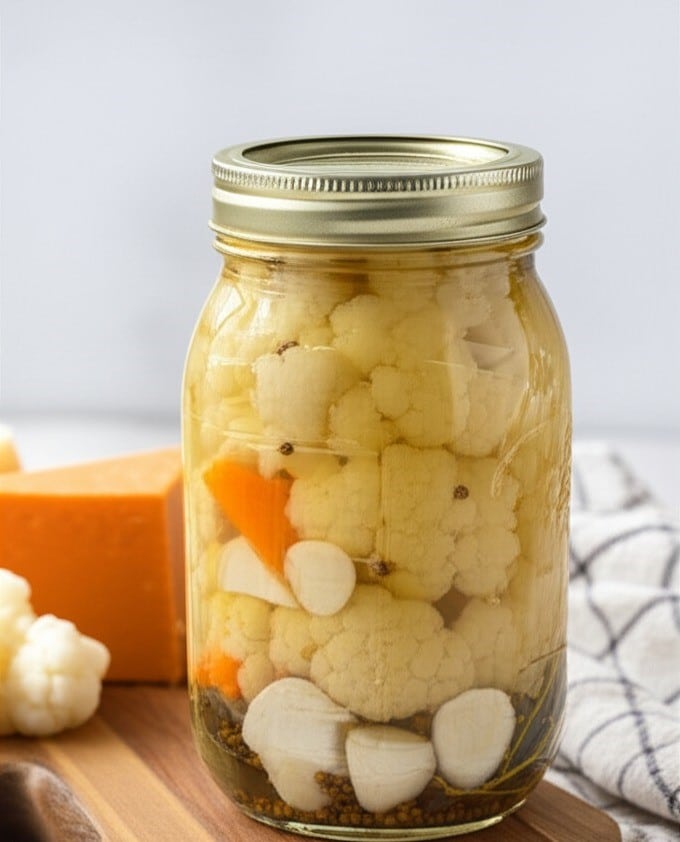
Don’t forget: after sealing your jars, let them rest in the fridge for at least 48 hours before tasting. That wait makes this pickled cauliflower recipe shine—and it keeps getting better over the next few weeks.
Storage, Flavor Tips, and Pairing Ideas
How Long Does Pickled Cauliflower Keep?
One of the best parts about any pickled cauliflower recipe is how long it lasts. Store your jars in the fridge, and they’ll keep for up to 2 months with no problem. The key is making sure your cauliflower stays fully covered in brine and the jar seals tightly. I label mine with the date so I know when to enjoy them while they’re still at their peak.
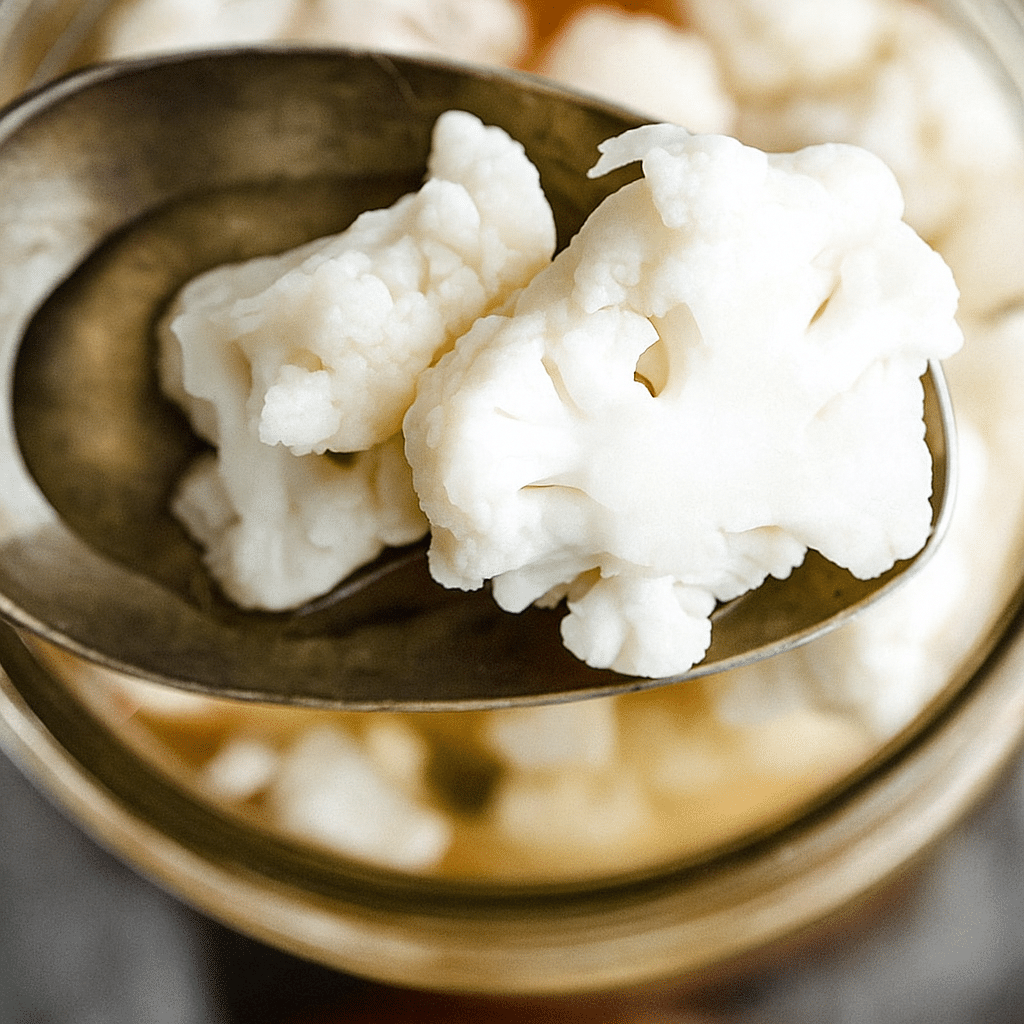
If you’re curious whether it’s healthy to eat pickled cauliflower—yes, it is! Cauliflower is naturally high in fiber, vitamin C, and low in calories. Paired with vinegar, you get a snack that’s crunchy, tangy, and gut-friendly. I follow a similar approach in my marinated red onions, which also keep their crisp bite and deep flavor over time.
The sodium can add up if you’re not careful, so I go easy on the salt—just like in my ginger bug recipe where balance matters for both taste and health.
Flavor Variations and Perfect Pairings
This pickled cauliflower recipe is great on its own, but even better when you play with flavors. Like it spicy? Add sliced jalapeños or chili flakes. Love herbs? Toss in a sprig of dill or a few coriander seeds. One of my favorite tweaks is adding sliced carrots or red bell pepper—they make the jars brighter and give that extra snap, kind of like the mix I use in my sweet potato nacho boats.
They’re perfect on a snack board, too. I often set them out alongside pimento cheese stuffed pretzel bites or even tuck them into a sandwich with something rich like masters egg salad. The vinegar tang cuts right through heavier flavors.
Want to get a little creative? Try this list of flavor ideas:
- Mustard seed + turmeric for a yellow glow
- Fresh dill or thyme for herbal notes
- Sliced garlic for bold zing
- A hint of sugar for a sweet-tart combo
And if you want another delicious use for leftover brine—try drizzling it over your next slaw or potato salad. I learned that trick while testing my longhorn steakhouse crispy Brussels sprouts—it adds that pop of vinegar that makes everything sing.
FAQs About Pickled Cauliflower
What is the best way to pickle cauliflower?
The best way to make a pickled cauliflower recipe is by combining a simple vinegar brine (white or apple cider vinegar), salt, garlic, and spices like mustard seed and peppercorns. The secret? Don’t skip the resting time—letting the jars sit at least 24 hours in the fridge lets the flavors fully soak in. I like to add a pinch of turmeric too—it gives the cauliflower a beautiful golden glow, just like I do with the dressing in my pasta bean salad.
Does cauliflower need to be blanched before pickling?
Blanching is optional, but I prefer it. A quick 1-minute boil softens the florets just enough so they absorb the brine faster without turning mushy. That little step makes a difference, especially in a cold salad like my vegan pad Thai, where vegetables need just the right texture. If you’re in a hurry, skip the blanch and go raw—just slice the florets thin so the brine penetrates quickly.
Is it healthy to eat pickled cauliflower?
Absolutely. A good pickled cauliflower recipe delivers crunch, flavor, and nutrition all in one bite. Cauliflower is rich in vitamin C, folate, and fiber. Plus, pickling it in vinegar (not sugar-heavy solutions) keeps it low-calorie. I eat it often as a healthy side, much like I do with my natural zepbound recipe, which is also focused on light and nourishing ingredients.
How long does pickled cauliflower keep?
Your pickled cauliflower will keep for up to 2 months in the fridge. Just make sure the jars are clean, sealed, and that the brine fully covers the florets. This is why I love refrigerator pickles so much—they’re safe, no canning needed, and super easy to prep ahead just like my dark chocolate hemp energy bites that live in the fridge all week.
Conclusion
There’s something so satisfying about making a fresh jar of pickled cauliflower. It’s crunchy, a little tangy, and endlessly flexible. Whether you’re tucking them into wraps, serving them on a snack board, or just snacking straight from the jar—they bring a homemade magic that store-bought can’t match.
This pickled cauliflower recipe has become a fridge staple in my kitchen. I always have a jar ready, especially when I’ve got guests coming over. It’s quick, easy, and always gets compliments. So next time you’ve got a head of cauliflower sitting around—grab your vinegar, a mason jar, and let’s get pickling.
Love homemade recipes like this pickled cauliflower? Follow me on Pinterest for more kitchen inspiration, and don’t miss my stories and tips over on Medium.

